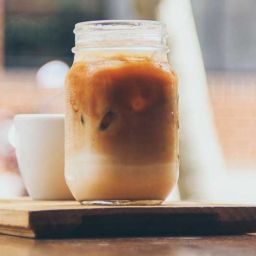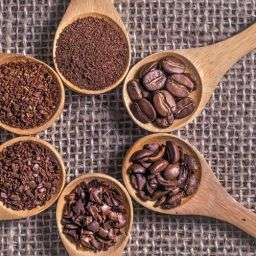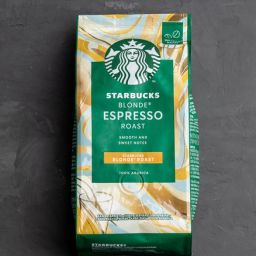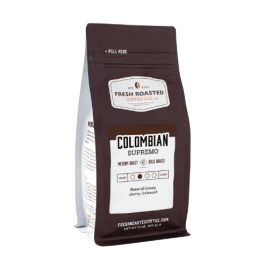
When you’re gearing up to brew that perfect cup of coffee, the amount of coffee beans you use is crucial. On average, you’ll want to use about 10-15 grams of whole coffee beans per cup. This usually translates to about two tablespoons once the beans are ground. Remember, the key to a consistently great cup of coffee starts with measuring your beans accurately.
Key Takeaways
- Importance of Coffee Bean Quality and Its Impact on Flavor: The quality of your coffee beans is fundamental to the flavor of your brew. High-quality beans are more likely to produce a rich and satisfying taste. This is because premium beans are typically grown in optimal conditions and harvested at their peak, ensuring all the flavorful oils and aromas are intact.
- The Role of the Coffee-to-Water Ratio and How It Varies by Brewing Method: The coffee-to-water ratio is vital in brewing. For most methods, starting with a ratio of 1:16 (one part coffee to sixteen parts water) is a good rule of thumb. However, this can vary depending on personal taste and the brewing technique. For example, espresso requires a much finer grind and less water compared to a French press, which uses a coarser grind and more water.
Recommendations for Coffee Bean Measurements for Different Coffee Types
- Espresso: Use about 7-11 grams of finely ground beans per cup. This stronger brew is dense and packed with flavor.
- Drip Coffee: Approximately 10-15 grams of medium-ground beans is standard, striking a balance between strength and flavor.
- French Press: Go for 9-10 grams of coarsely ground beans per cup to enjoy its rich, full-bodied texture.
Measuring Whole Coffee Beans
When it comes to brewing the perfect cup of coffee, precision is key. One of the best ways to ensure you get the same great taste every time is by measuring your coffee beans accurately. Here’s a rundown on why using a scale might become your next best habit, along with a look at different measures and how the roast and size of your beans can affect the quantity you need.
Why Use a Scale?
For coffee aficionados and beginners alike, investing in a good digital kitchen scale is a game-changer. Scales provide accuracy that measuring spoons and cups can’t match, especially since the density of coffee beans can vary dramatically depending on their type and roast. By using a scale, you can measure the exact amount of coffee you need, down to the gram, ensuring consistent strength and flavor in every cup.
Grams, Tablespoons, or Ounces?
- Grams: This is the most precise measurement and is widely recommended for coffee brewing. Since brewing coffee is all about the right ratios, knowing your coffee mass in grams allows for consistency and reproducibility.
- Tablespoons: While not as accurate as grams, tablespoons are a common measure for coffee at home. Remember, the size and shape of beans can lead to varying results when using volume measurements like tablespoons.
- Ounces: In some regions, coffee beans are measured in ounces. This is less common but follows the same principle as grams. Just convert your required grams into ounces (1 ounce = 28.35 grams) if needed.
Impact of Roast and Bean Size
The roast level of your coffee beans affects their density. Lighter roasts are denser and therefore you might need slightly fewer beans by volume to reach the desired weight. Conversely, darker roasts are less dense and might seem bulkier for the same weight. Bean size also plays a role; larger beans take up more space, so a tablespoon of large beans will weigh less than a tablespoon of smaller beans.
Factors Influencing Coffee Strength and Flavor
When brewing your morning cup of coffee, several key factors come into play that affect both the strength and flavor of your brew. Understanding how water temperature, grind size, brew time, and extraction interact can help you control the quality of your coffee.
Water Temperature: The temperature of the water used to brew coffee is crucial. Ideal brewing temperatures range from 195°F to 205°F. Water that’s too hot can cause over-extraction, leading to a bitter taste. Conversely, water that’s too cool may under-extract, producing a weak, flat cup. Maintaining the right temperature ensures that the desirable coffee flavors are efficiently extracted without the bitter compounds.
Grind Size: The size of your coffee grounds has a major impact on extraction. Fine grinds expose more coffee surface to water, which speeds up extraction but can easily lead to a bitter taste if over-extracted. Coarser grinds slow down the extraction process, suitable for methods like French press, which require longer brewing times. Matching the grind size to your brewing method is essential for balancing flavor extraction.
Brew Time: Brew time works hand in hand with grind size to affect the extraction process. Espresso, for example, uses a very fine grind and a fast brew time, while French press coffee uses a coarse grind that brews for several minutes. Shorter brew times can lead to under-extraction, missing out on some flavors and acids, whereas longer times can pull out undesirable bitter flavors.
Extraction Process: The goal of brewing coffee is to extract the compounds that give coffee its flavor and aroma. Proper extraction depends on the right balance of grind size, water temperature, and brew time. Under-extraction results in a sour, acidic coffee, while over-extraction leads to bitterness. Achieving the right extraction means hitting the sweet spot where the best flavors of the coffee are highlighted without any unpleasant tastes.
Coffee Bean to Water Ratio Variations
The coffee bean to water ratio is a fundamental aspect of brewing coffee that varies widely based on personal taste and the brewing method used. Getting this ratio right can dramatically enhance the quality of your coffee.
Starting Ratios for Different Brewing Methods
A general guideline for a balanced cup of coffee is a 1:16 ratio—one part coffee to sixteen parts water. This ratio serves as a solid starting point for most drip coffee makers. However, the ideal ratio can vary depending on the coffee’s roast level, grind, and your flavor preference.
Adjusting the Ratio for Taste
For those who prefer a stronger, more robust cup, decreasing the water part—say, a 1:14 ratio—increases the coffee’s strength. Conversely, if a milder beverage is more to your liking, increasing the water, perhaps to a 1:18 ratio, can produce a lighter taste.
Variations by Brewing Method
Different brewing methods also necessitate adjustments in the coffee to water ratio:
- Espresso: Typically uses a much more concentrated ratio, around 1:2.
- French Press: Often uses a 1:12 ratio for a full-bodied flavor.
- Cold Brew: Requires a higher coffee concentration, usually around 1:8, because the coffee grounds steep in cold water for an extended period.
Tailoring to Personal Preferences
Ultimately, the best way to find your ideal coffee balance is through experimentation. Start with the recommended ratios for your brewing method and adjust according to your taste preferences. Pay attention to the body and flavor of the coffee with each adjustment and tweak accordingly until you find your perfect match.
FAQs
How does bean type affect the amount needed?
Different bean types can vary significantly in size, density, and flavor intensity. For example, Arabica beans are typically larger and less dense than Robusta beans, which might mean you use slightly more Arabica beans to achieve the same coffee strength. The bean type can influence how much you need to use to get your desired flavor profile.
Can the same measurements be used for all brewing methods?
No, different brewing methods typically require different measurements. Espresso, for example, requires a finer grind and more coffee relative to water than a drip brewer. It’s essential to adjust your measurements based on the specific requirements of the brewing method you are using.
How do you adjust coffee strength?
Adjusting coffee strength is primarily about changing the coffee-to-water ratio. For a stronger cup, increase the amount of coffee without changing the amount of water. For a milder cup, decrease the coffee or increase the water. Experimentation is key to finding your perfect balance.
Final Thoughts
Mastering the use of whole coffee beans per cup is an art that requires attention to detail and a willingness to experiment. Key factors like the coffee-to-water ratio, the type of beans, grind size, and brewing method all play crucial roles in achieving the perfect cup of coffee. Each element needs to be adjusted according to personal taste preferences and the specific characteristics of the coffee being used. The most important takeaway is that experimentation and adaptation are essential.









